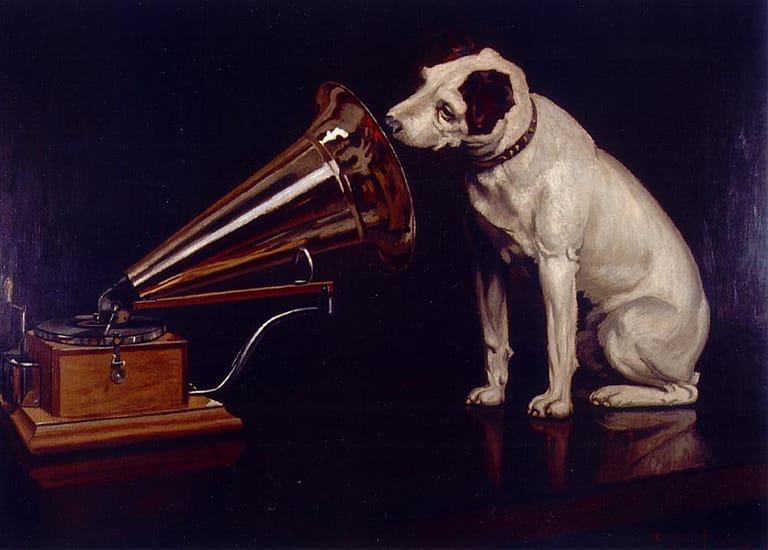Music, an art form that transcends boundaries, has a rich tapestry of history filled with innovation, unique traditions, and remarkable talents. From the haunting melodies of ancient instruments to groundbreaking digital compositions, it reflects the depth of human creativity and emotion. This collection of quirky facts about music genres, instruments, and famous musicians offers a glimpse into the diverse and fascinating world of music, highlighting its power to innovate, entertain, and inspire across generations and cultures.
The Theremin: One of the earliest electronic instruments, the Theremin is unique because it’s played without physical contact. The musician moves their hands in the air near two metal antennas to control pitch and volume, creating eerie sounds that have been used in movie soundtracks and by bands like The Beach Boys in “Good Vibrations”.
The Beatles’ Hidden Sound: In “A Day in the Life,” the final track on The Beatles’ “Sgt. Pepper’s Lonely Hearts Club Band,” there’s a high-pitched whistle, audible only to dogs, that was added by Paul McCartney for his Shetland sheepdog.
Strange Instruments: The Great Stalacpipe Organ is the world’s largest instrument, located in Luray Caverns, Virginia. It uses rubber mallets to gently tap stalactites of varying sizes to produce tones similar to those of xylophones, tuning forks, or bells.
Mozart’s Anonymity: Wolfgang Amadeus Mozart composed over 600 works in his lifetime, but a large number of them were published anonymously. This was common in his era, but it also meant that many of his pieces weren’t attributed to him until well after his death.
The Vegetal Violin: In 1999, a group of Italian craftsmen built a working violin from a carrot as part of a project to explore alternative organic materials in instrument construction. It was part of a series that included instruments made from pumpkins and other vegetables.
Led Zeppelin’s “No-Synth” Policy: Up until their fifth album, Led Zeppelin had a policy of not using synthesizers in their music—a stark contrast to many of their contemporaries in the 1970s. They eventually broke this rule with the album “Houses of the Holy”.

Freddie Mercury’s Vocal Range: The legendary Queen frontman had a staggering vocal range of four full octaves. Mercury’s voice could cover everything from bass low F (F2) to soprano high F (F6), showcasing his versatility across genres from rock to opera.
Vinyl Records in Space: NASA sent the Voyager Golden Records into space aboard the Voyager spacecrafts in 1977. These records contain sounds and images selected to portray the diversity of life and culture on Earth, including music from different cultures and eras, intended for any intelligent extraterrestrial life or future humans who might find them.
The First Music Video: Although music videos became a staple of the music industry in the 1980s with the advent of MTV, the first music video is often credited to Tony Bennett for his 1956 song “Stranger in Paradise.” It was used as a promotional film or a “soundie” to promote the artist and his music.
The Most Covered Song: “Yesterday” by The Beatles is one of the most covered songs in the history of recorded music, with more than 2,200 versions and counting. The melody came to Paul McCartney in a dream, and he initially used the placeholder lyrics “Scrambled eggs, oh my baby how I love your legs” before settling on the final version.
Michael Jackson’s Patent: Not only was Michael Jackson a pioneer in music and dance, but he also co-held a patent for a shoe design. This invention allowed dancers to lean forward beyond their center of gravity, as seen in the music video for “Smooth Criminal,” by anchoring a hitch to the stage.
The Most Expensive Musical Instrument: The “Lady Blunt” Stradivarius violin, made by Antonio Stradivari in 1721, was sold for $16 million in 2011. Stradivarius instruments are renowned for their exceptional craftsmanship. The wood used by Antonio Stradivari for his famed violins is believed to have come from trees that grew during the Little Ice Age, from approximately 1300 to 1850. The cold conditions resulted in dense wood with superior acoustic properties, contributing to the unique sound of Stradivarius instruments.
The 27 Club: An unusually high number of influential musicians have died at the age of 27, including Jimi Hendrix, Janis Joplin, Jim Morrison, Kurt Cobain, and Amy Winehouse. This phenomenon has led to the notion of the “27 Club,” fueling speculation and theories about the age’s significance in the music industry.
The Invention of Auto-Tune: Auto-Tune, now a common tool in music production for correcting pitch in vocal and instrumental performances, was originally invented by Dr. Andy Hildebrand, an engineer who used techniques from seismic data processing to detect oil. The technology made its music debut in Cher’s 1998 hit “Believe,” giving her voice a distinctive electronic modulation.
Beethoven’s Metronome: Ludwig van Beethoven was one of the first composers to use a metronome. The metronome was developed by Johann Nepomuk Mälzel in 1815, and Beethoven immediately saw its value, retrospectively adding metronome markings to his previous compositions to ensure they would be played at his intended tempos.
The World’s Smallest Record: In 2017, a tiny record with a playable area of only 30mm in diameter was created, featuring the shortest song by the band Napalm Death, “You Suffer,” which lasts only about one second. This record was made to challenge the limits of how music can be physically stored and played.
Keith Richards’ Life-Saving Guitar: The Rolling Stones’ guitarist Keith Richards reportedly once survived an electric shock during a concert. The shock was so severe it could have been fatal, but Richards believes his guitar absorbed the majority of the electrical discharge, saving his life.
The First Internet Album Release: In 1994, the rock band Aerosmith released the song “Head First” over the internet, making it one of the first songs to be distributed online, even before the widespread use of the World Wide Web for music distribution.
Guitar Strings from the Slaughterhouse: Historically, guitar and other string instrument strings were made from animal intestines, known as catgut. These strings were made primarily from sheep and goat intestines, not cats. Modern strings are typically made from nylon or steel, but some musicians still prefer the traditional gut strings for their unique sound quality.
The First Music Piracy: Music piracy is not a modern phenomenon. In the 1600s, the composer Johann Sebastian Bach walked 400 kilometers to copy a forbidden score by Dietrich Buxtehude. This act of copying music without permission is considered one of the earliest instances of music piracy.
The Vegetable Orchestra: Founded in Vienna in 1998, The Vegetable Orchestra performs music using instruments made entirely from fresh vegetables. After their performances, the instruments are cooked into a soup for the audience and the orchestra to enjoy, blending the art of music with culinary creativity.
The Concept Album Pioneer: Frank Sinatra is credited with creating the first concept album, “In the Wee Small Hours” (1955), where all songs on the album are unified by a single theme or mood. This was a departure from the then-common practice of albums being merely collections of singles.
The Most Remote Music Festival: The Festival in the Desert is held annually in Mali, near Timbuktu, one of the most remote cities in the world. Despite the challenging location, it attracts musicians and music lovers from all over the globe, celebrating the rich musical heritage of the Sahara Desert and its surrounding regions.
Silent Disco Technology: The concept of a silent disco, where people dance to music listened to on wireless headphones rather than played over a speaker system, was first patented in the 1960s. However, it didn’t gain popularity until the early 2000s. This unique approach allows multiple music options at the same venue and reduces noise pollution.
The Accidental Invention of the Electric Guitar: The electric guitar was essentially invented by accident. In the 1930s, George Beauchamp was looking for a way to amplify the sound of the traditional guitar so it could be heard over other instruments in bands. This led to the development of the “Frying Pan,” the first electric guitar, which revolutionized music, particularly rock and roll.
Mozart’s Musical Joke: Wolfgang Amadeus Mozart composed “Ein Musikalischer Spaß” (A Musical Joke), which includes intentional errors, awkward phrasing, and clichéd melodies to parody the less competent composers of his time. This piece showcases Mozart’s sense of humor and his mastery over classical music conventions.

The Gramophone and the Nipper: The iconic image of a dog listening to a gramophone, known as “His Master’s Voice,” features a dog named Nipper who was actually listening to a recording of his late owner’s voice. This image became one of the most recognizable trademarks in the music industry.
The First Song in Space: “Jingle Bells” became the first song played in space when astronauts Wally Schirra and Tom Stafford aboard Gemini VI played a prank on Mission Control during their December 1965 mission. They used a smuggled harmonica and sleigh bells to play the tune, marking a humorous and historic moment in space exploration.
The First Female Symphony Composer: Louise Farrenc, a 19th-century French composer, was one of the first women to compose symphonies, breaking gender barriers in a male-dominated classical music world. Her work was highly respected by contemporaries, yet she remains relatively unknown today.
The Oldest Recorded Melody: The oldest known melody, “Hurrian Hymn No. 6,” dates back to approximately 1400 BCE. It was discovered in Ugarit (modern-day Syria) on a clay tablet inscribed in Cuneiform text, providing a rare glimpse into ancient music.
The Power of Musical Silence: John Cage’s avant-garde composition “4′33″” is performed without a single note being played. Its purpose is to highlight the ambient sounds of the environment and the audience during the performance, challenging traditional concepts of music and sound.
The Sea Organ: Located in Zadar, Croatia, the Sea Organ is an architectural sound art object that creates music powered by the sea waves. Its underwater pipes are designed to play harmonious tones as the waves push air through them, offering a continuous natural concert.
The Invention of Multi-Track Recording: Les Paul, a pioneer in electric guitar design, also invented multi-track recording in the late 1940s. This breakthrough allowed musicians to record different instrument parts at separate times, revolutionizing music production.
The Codex Rotundus: A heart-shaped music manuscript from the 15th century, the Codex Rotundus contains songs of courtly love. Its unique shape and design are a testament to the creativity and romanticism of medieval music manuscript tradition.

